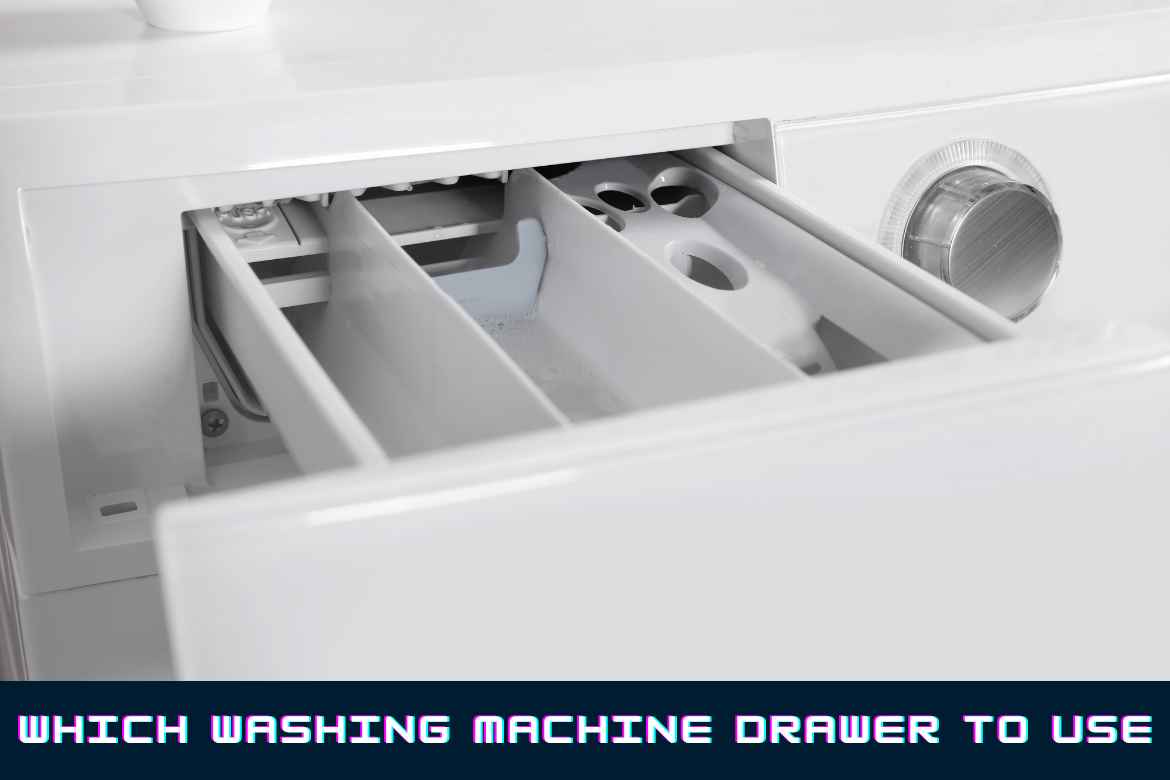Your washing machine, a faithful household companion that is used daily, might seem like a straightforward, easy-to-use machine at first glance. You toss in your clothes, select a cycle, and let it work its magic. However, hidden within this seemingly simple appliance lies a crucial component that often goes overlooked—the washing machine’s drawer.
To give an example, Since the inception of the first automatic washing machine designed for home use back in 1937, coupled with the commercial debut of the inaugural electric dryer in 1938, these appliances have solidified their status as household essentials in developed nations. For instance, in the United States, more than 80 percent of households boast the convenience of a washing machine.
It’s also noteworthy that the global annual revenues stemming from the sale of washing machines and dryers are on an upward trajectory as well, projected to soar past a staggering 75 billion U.S. dollars in the foreseeable future. This substantial growth underscores the pivotal role this segment plays within the broader household appliance industry. That is why it’s vital to understand this machine that the majority of people use to easily clean their clothes.
Table of Contents
ToggleUnderstanding Your Washing Machine Drawer
1. The Purpose of the Washing Machine Drawer
At first glance, you might wonder why your washing machine needs a drawer. After all, isn’t it all about tossing clothes into the drum, adding detergent, and pressing a few buttons? Well, yes, but the washing machine drawer serves a vital role in the laundry process.
Think of the drawer as a gateway to cleanliness and freshness. It’s designed to dispense various laundry products—detergent, fabric softener, and even bleach—into your machine at precisely the right time during the wash cycle. In doing so, it ensures that your clothes get the treatment they deserve.
2. Typical Compartments in a Washing Machine Drawer
- Detergent Compartment: This is the largest and most frequently used compartment. It’s where you pour your laundry detergent. Different machines may have markings indicating the maximum amount of detergent to use, so be sure to check your manufacturer’s guidelines. We’ll dive deeper into this compartment shortly.
- Fabric Softener Compartment: Smaller in size and usually adorned with a flower or raindrop icon, this compartment is where you add fabric softener. Fabric softeners help make your clothes feel softer and smell delightful. It’s advantageous if you love those comfy, cosy, and freshly-scented clothes.
- Bleach Compartment: Easily recognisable by the bleach symbol, this compartment is for bleach, which is used to disinfect and whiten clothes too. However, not all wash cycles require bleach, so it’s essential to understand when and how to use it correctly.
Now, you might be wondering, “What if my washing machine has more than three compartments?” This is indeed a common question, and some advanced machines do offer additional compartments for specialised detergents or additives. However, for most washing routines, these three compartments suffice.
Which Washing Machine Drawer is for Detergent?
1. A Detailed Guide on Using the Right Compartment
Let’s start with the star of the show—the detergent compartment. As mentioned earlier, it’s the largest and is typically located on the left side of the drawer too. This is where your laundry detergent should go, but it’s not a one-size-fits-all situation. Here’s what you need to know:
- Liquid or Powder: Most detergents, whether liquid or powder, are suitable for this compartment. The choice between the two usually comes down to personal preference. However, some machines may work better with one type over the other, so it’s a good idea to check your washing machine’s manual for any specific recommendations too.
- Measuring Matters: Pouring detergent directly into the drawer might seem like a simple task, but measuring it correctly is crucial. Using too much detergent can lead to residue buildup and even damage to your washing machine. On the flip side, too little detergent may not effectively clean your clothes.
- Check Your Machine’s Guidelines: Always consult your washing machine’s user manual for guidance on the recommended detergent dosage. Many devices have markings inside the detergent compartment to indicate the maximum level, helping you avoid overloading.
2. The Importance of Selecting the Right Detergent
3. Tips for Avoiding Common Detergent-Related Issues
First, it’s essential to use the right amount of detergent. Stick to the recommended dosage specified in your washing machine’s manual. If you’re unsure, it’s wise to start with a slightly lower amount and make adjustments as needed too. This practice can help prevent issues like excessive suds and detergent residue buildup.
Secondly, don’t neglect the detergent drawer itself. Residue can accumulate over time, potentially leading to mould and mildew growth. To prevent this, periodically remove the detergent drawer and give it a thorough cleaning. Regular maintenance ensures that your laundry products stay fresh and compelling.
Lastly, the choice of detergent matters. Go for a reputable detergent brand, considering your specific laundry needs. For instance, hypoallergenic options are available for those with sensitive skin, while unique formulas cater to tough stains. Selecting the suitable detergent enhances your laundry’s cleanliness and freshness while reducing the risk of detergent-related problems.
Using the Fabric Softener Compartment
1. The Purpose of the Fabric Softener Compartment
2. Tips on Selecting and Using Fabric Softener Effectively
- Choose the Right Fabric Softener: When selecting a fabric softener, go for one that suits your preferences. There are various scents available too, from lavender to fresh linen, so pick the one that brings you joy. Additionally, look for products that are compatible with your washing machine type as well, especially if you have a high-efficiency (HE) machine.
- Measure Carefully: Like detergent, fabric softener should be used in moderation. Overloading the compartment can lead to an overabundance of softener in your wash, which may leave clothes feeling sticky or less absorbent. Follow the recommended dosage on the product label, or check your machine’s manual for guidance.
- Timing is Everything: Most washing machines release fabric softener during the final rinse cycle. This allows the softener to thoroughly permeate your clothes without interference from detergent. So, no need to worry about mixing them up!
Precautions for the Bleach Compartment
1. Understanding the Bleach Compartment and Its Function
2. Safety Precautions When Using Bleach in Your Washing Machine
Using bleach effectively begins with proper dilution. Never pour bleach directly onto your clothes; it must be diluted with water before adding it to the bleach compartment. Refer to the bleach bottle for precise dilution ratios.
Moderation is also vital when it comes to bleach. Using too much can lead to fabric damage, weakened fibres, and unpleasant odors. Always adhere to your washing machine’s recommendations regarding the maximum bleach amount per cycle.
Never mix bleach with other cleaning agents, especially ammonia. Combining these substances can produce harmful fumes with potentially severe health consequences. Ensure your washing machine is free from any remnants of other cleaning products before using bleach.
When contemplating bleach for coloured fabrics, proceed with caution. Perform a colorfastness test on a hidden area beforehand to avoid unintended fading or discoloration.
Furthermore, safeguard yourself against potential contact with bleach. Wearing protective gloves is advisable, and be vigilant about avoiding splashes. In the event of contact, rinse the affected area thoroughly with water.
Ventilation plays a crucial role in ensuring safety. When using bleach, ensure that your laundry area has adequate airflow to prevent inhaling potentially harmful fumes. Lastly, store bleach securely. Keep it out of reach of children and pets, and store it in a cool, dry location away from direct sunlight.

